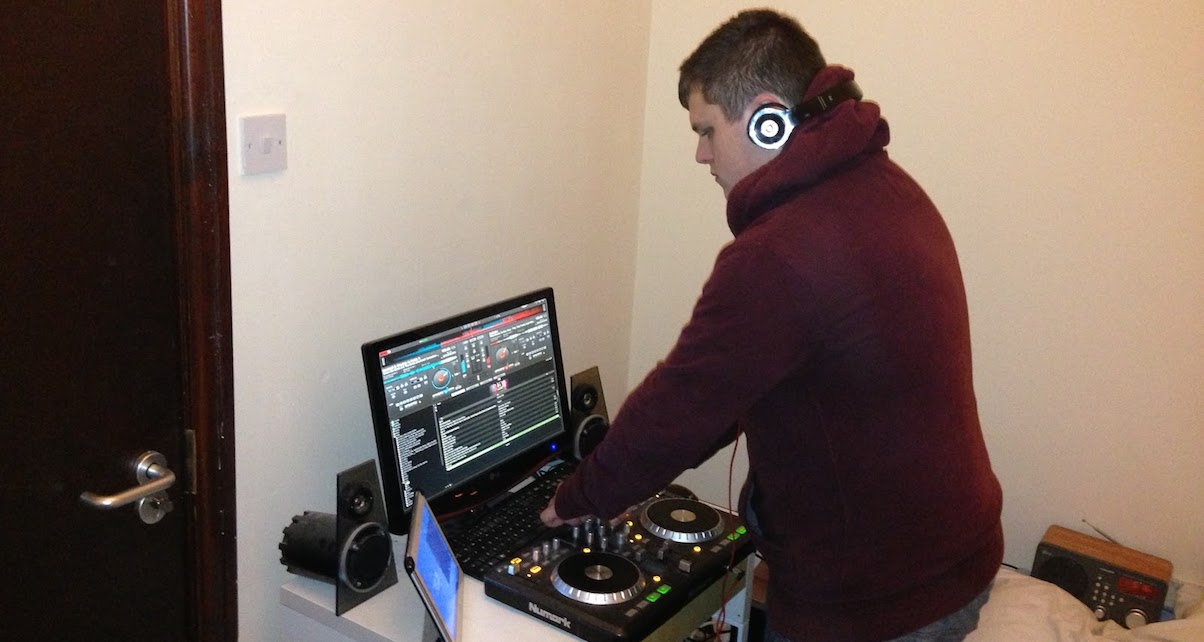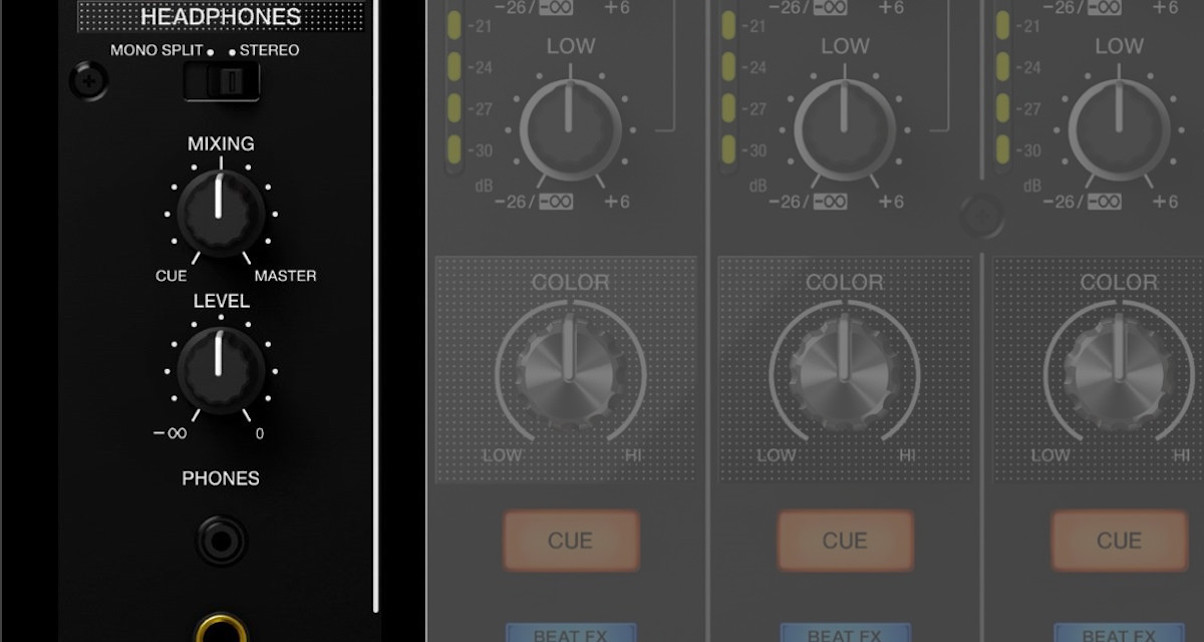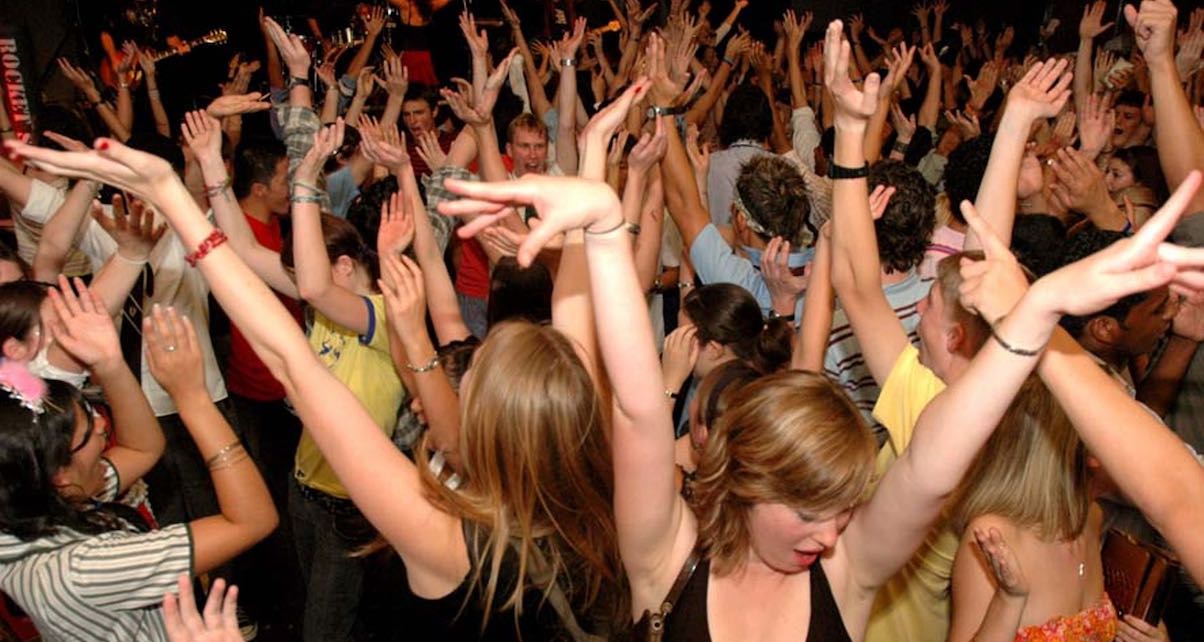Learning to mix entirely in your headphones is a handy skill for DJs to have. Some DJs learn to do this from the outset because they have to keep the volume down when they are practising. Many never bother to learn but there are but there are times when you might be forced to mix this way.
Examples of this are when the DJ booth monitors are poor or non-existent, and if you plan on DJing with in-ear monitors (IEMs). It may be weird at first, so in this article, we take a look a look at three ways to help you get used to mixing in your cans.
Three ways
1. Practise mixing this way at home

Naturally, the best way of learning is by putting in some practice time. Even if you can play as loud as you want, getting used to this style of mixing is sure to bail you out in the future. Turn off your speakers, hit record and start mixing. It will be strange at first, but it’s a novel way of practising and a new way to challenge yourself.
Learning to mix well in your headphones also opens up more practice opportunities because you are mixing in “silence”. This means you can have a session at any time, anywhere you want, without the worry of inconveniencing anyone else. When you are flying or on a long car journey, it is likely that you will have your DJ laptop with you. Quell the boredom and use this opportunity to get some practice hours in as well. The time will fly by as you make your road trip mixtape and kill two birds with one stone.
2. Use the cue mix knob to monitor the track you’re mixing in against the Master output

When you have got used to this feeling of “mixing in your head”, put the speakers back on and play as you would normally. Sure, the music is playing out but resist the temptation to take your headphones off during transitions. If your mixer or controller has a “split cue” function, you can use this to listen to the Master and the cue in separate ears. If you don’t have this function, you can use the standard “cue mix” knob to monitor the track you’re bringing in against the Master output.
Many DJs stick to the way they were shown and learned when it comes to cueing. It is advisable to get to grips with all the functions of your equipment and exploring this style of mixing is another way of doing that. If you do this, you are miles more prepared should the monitoring situation at the gig be poor (or non-existent).
3. Test it out at your next gig!

As mentioned earlier on, sometimes you will play a gig and there will be no monitors. Even if your regular spots do have monitors, it’s worth practising mixing using just your headphones a few times anyway to get used to it in a “live” setting. Mixing to an audience is different compared to mixing in your bedroom. Even if you have the skill down at home, you don’t want to be faced with a panicky situation where you are forced to mix in your cans when you weren’t expecting it. Speaking from experience, it feels weird and stresses you out massively.
If you are playing gigs in loud places, it might be worth checking out in-ear monitors (IEMs). These block out the external noise and protect your ears while providing you with crystal clear sound for cueing. Laidback Luke is a prominent IEM user. Of course, if you go down this route, you can only mix in your headphones but that shouldn’t be a problem if you have already put the practice in.
Finally…
Whether or not you think you need to, this is a skill that can save your hide when playing out. If there are no monitors, sometimes it can be tricky to hear the track which is playing properly. You can do away with this worry entirely by learning how to mix in your headphones. There is an added bonus too – you won’t have to risk or put up with any more noise complaints as you silently practise at home.
Do you mix entirely in your headphones? Has this skill ever saved your hide at a gig? If you have tried them, what are your experiences with IEMs? Let us know in the comments below…




